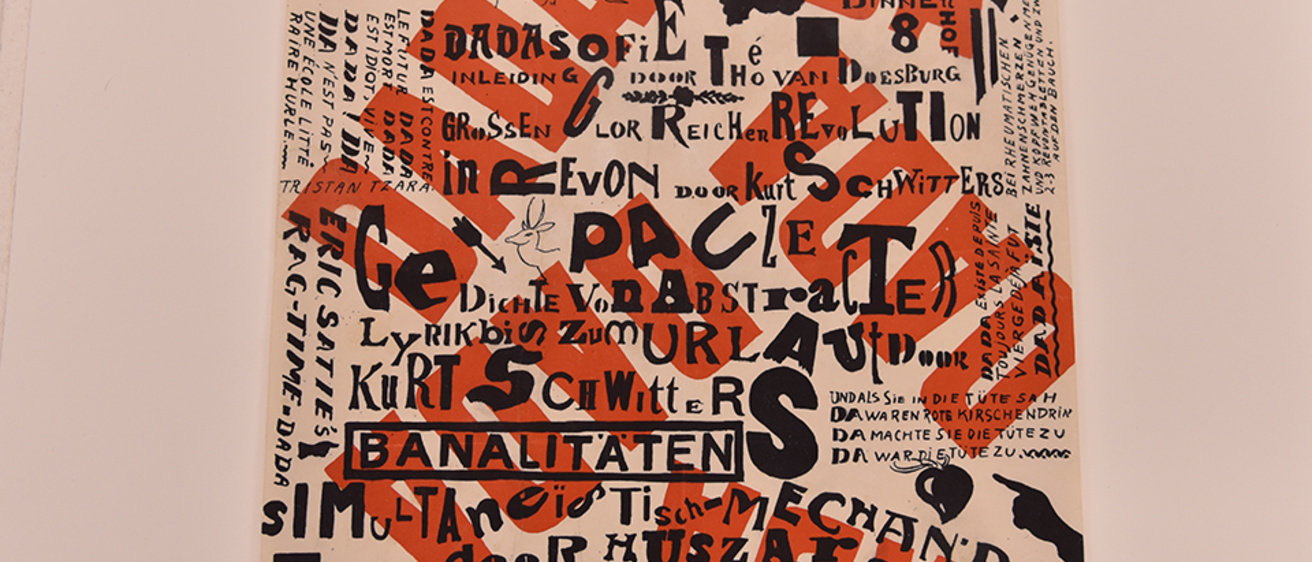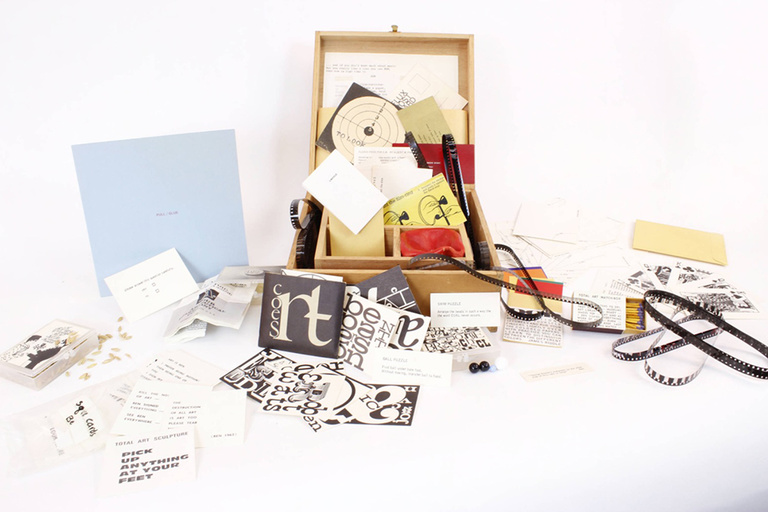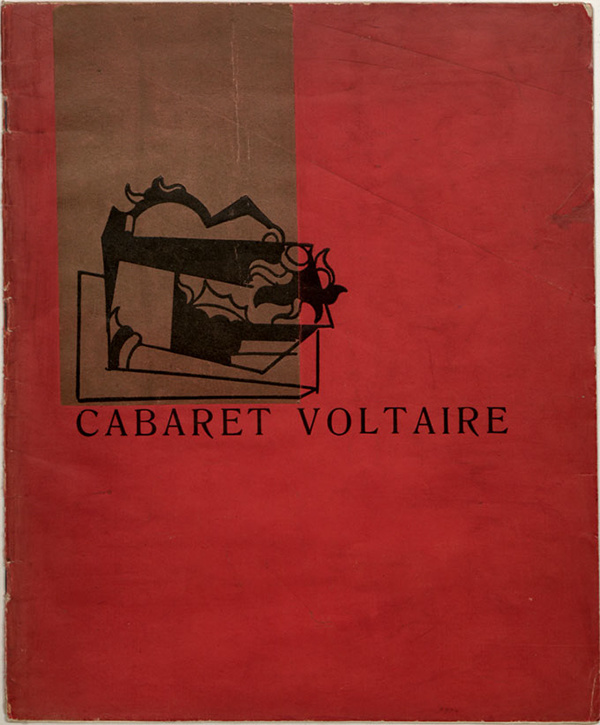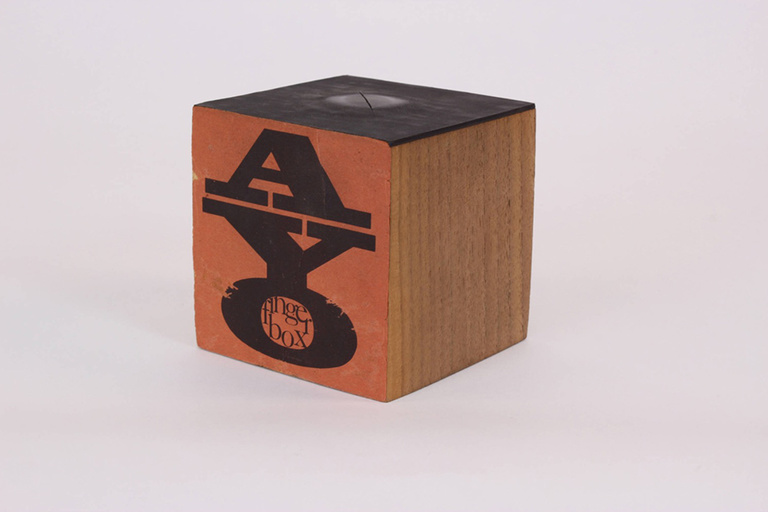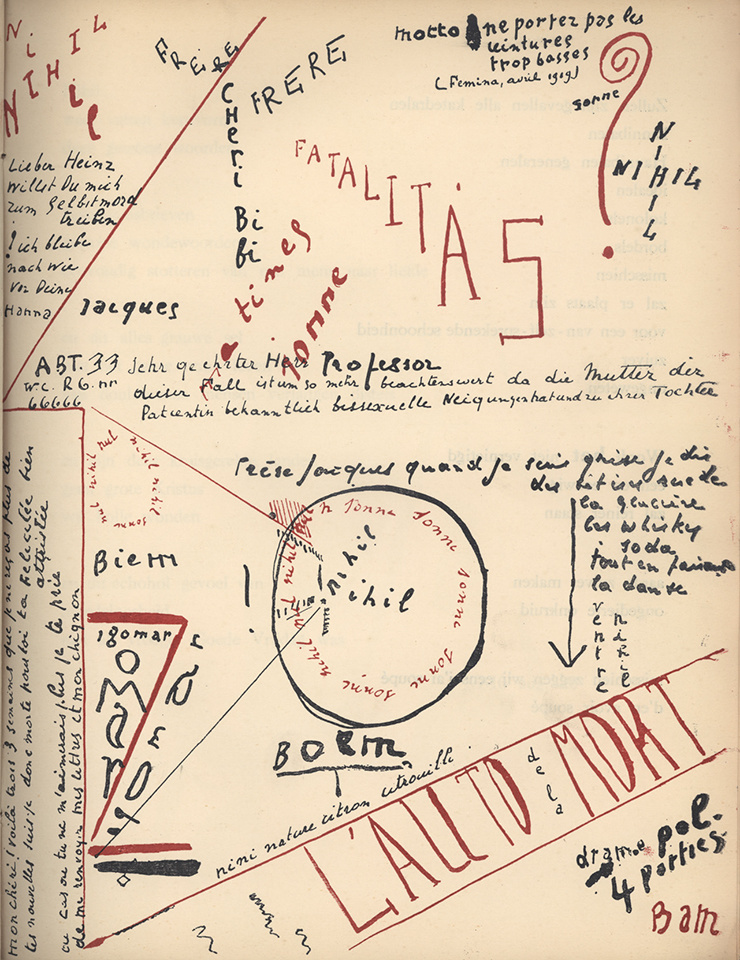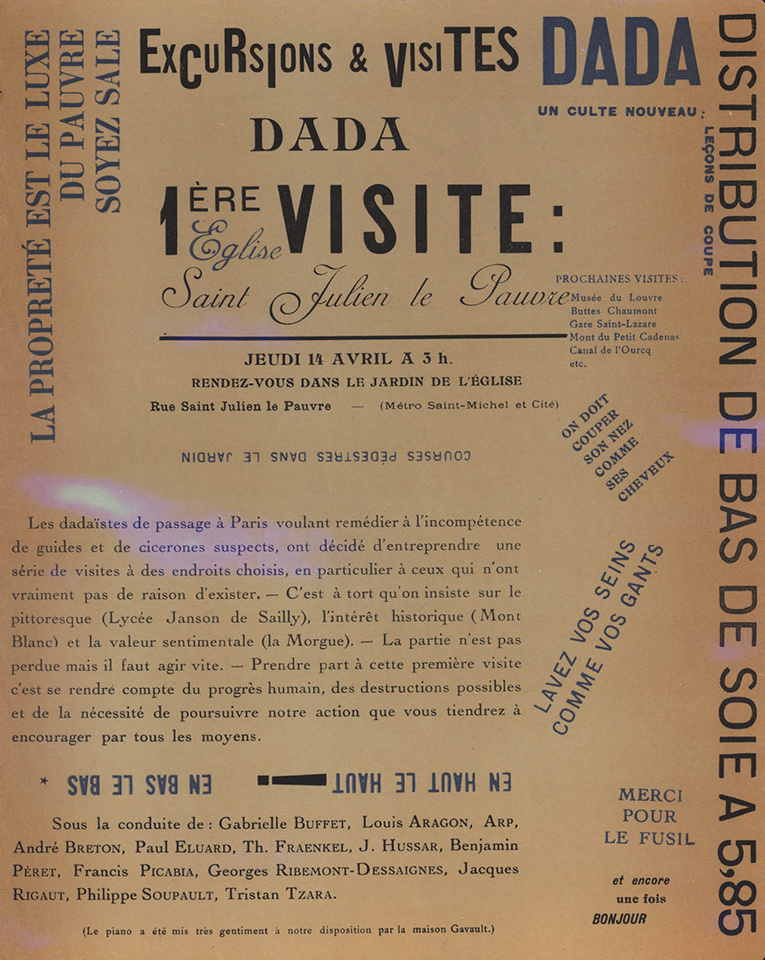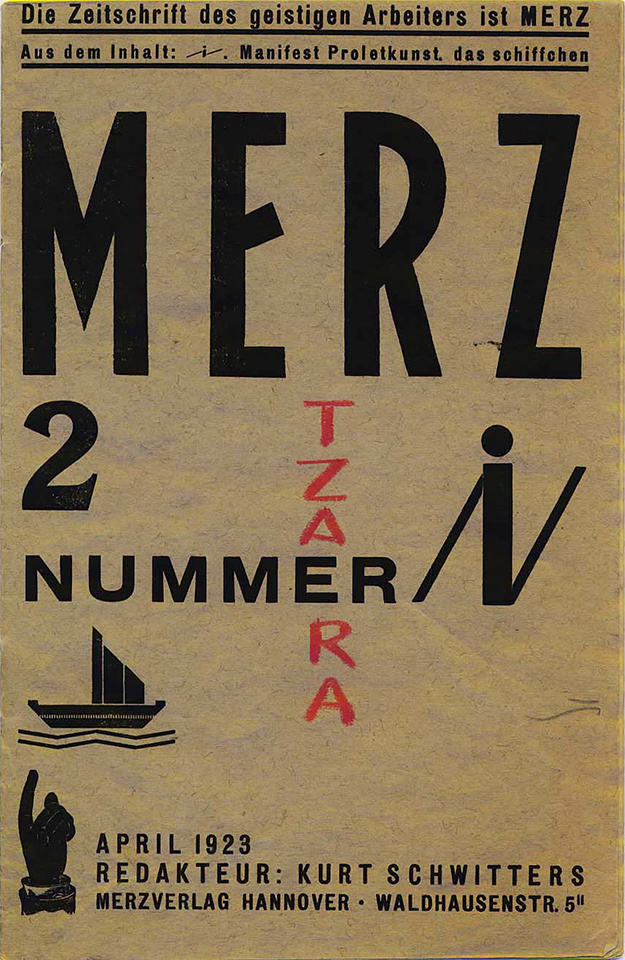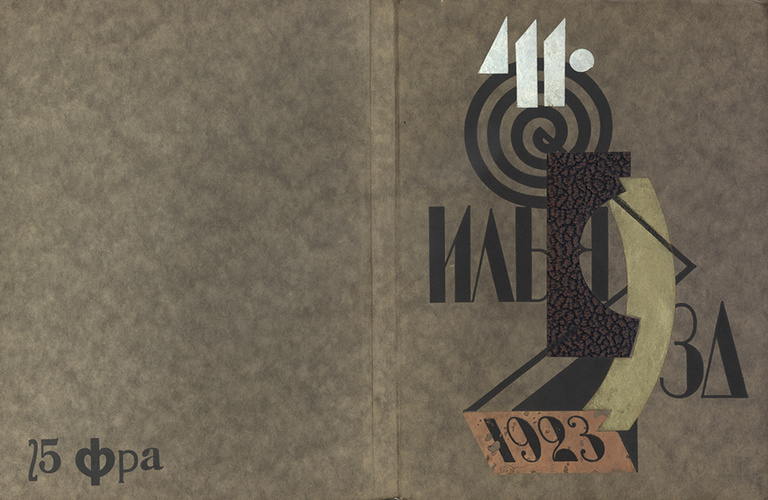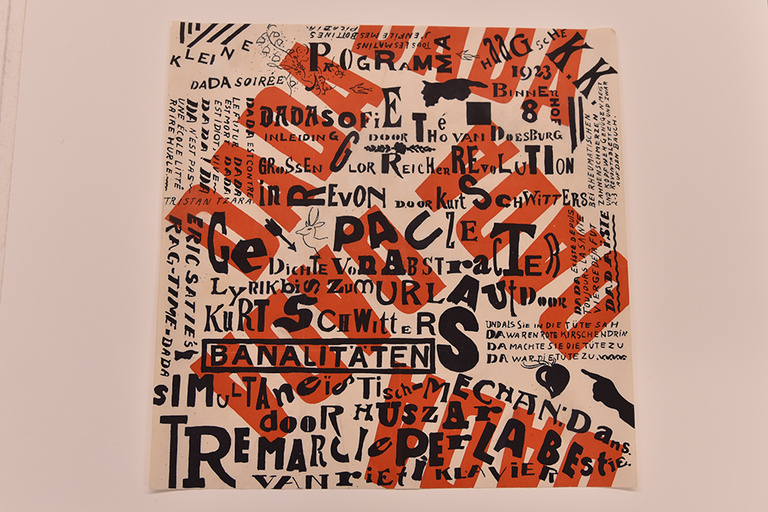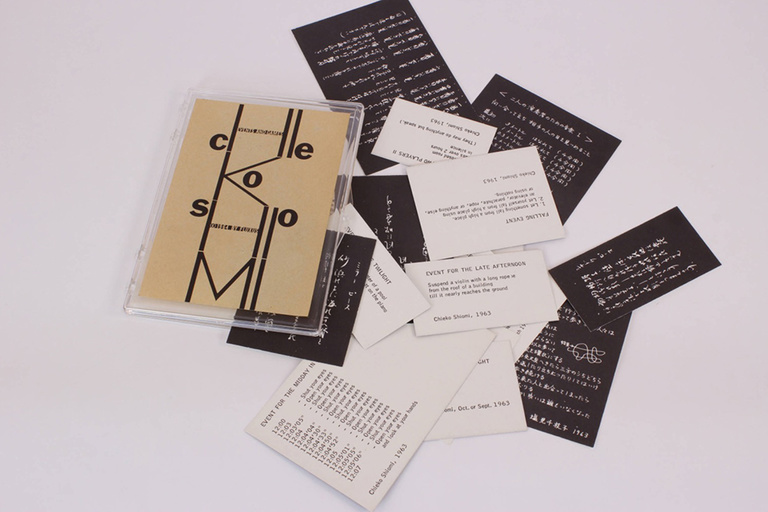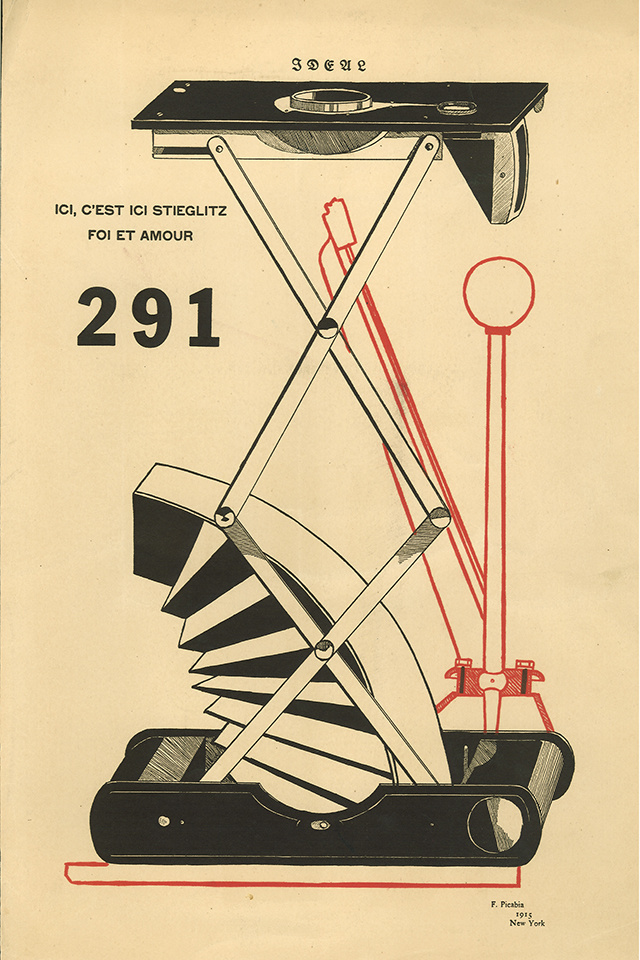Forty years ago, the University of Iowa sponsored an international conference and exhibit on Dada, an avant-garde movement that arose as a reaction to World War I and swept Europe and America. This conference (Dada Spectrum) and exhibition (Dada Artifacts) led to the creation of the International Dada Archive at the UI Libraries in 1979.
See the University of Iowa Dada and Fluxus collections online.
Digital Dada Library
Fluxus Digital Collection
Even before the International Dada Archive was established, the UI’s holdings in the field were extensive, and the collection has since grown to include about 75,000 objects such as books, articles, magazines, broadsheets, drawings and sketchbooks, diaries, invitations, video recordings, and sound recordings.
“These works are not necessarily meant to be hung on a wall,” says Joyce Tsai, clinical associate professor in the College of Education and a curator at the UI Museum of Art. “It’s art on the go, meant to circulate and make you act. It’s the notion that art should be accessible and everywhere.”
Today, these works are able to travel farther and reach more viewers than their artists likely ever imagined, thanks to efforts that began in the late 1990s to digitize the collection. The Digital Dada Library provides links to scanned pages of original Dada-era publications, including books, pamphlets, broadsides, and periodicals.
“We receive hundreds of thousands of hits on this collection,” says Timothy Shipe, curator of the International Dada Archive. “I’ve had people from more than 30 countries contact me to say they couldn’t teach their classes without this digital collection.”
Stephen Voyce, associate professor of English and director of the Fluxus Digital Collection, which launched in 2015, says he frequently gets emails from high school and elementary school teachers who use the digital collections in their classrooms. Fluxus was an international and interdisciplinary group of artists who worked primarily in the 1960s and ’70s and had roots in Dada. In fact, it’s often described as neo-Dada. The year after the Dada archive was founded, artist Ken Friedman donated the Fluxus West Collection to the UI, and the collection has grown to include drawings, paintings, sculptures, and writings by internationally acclaimed artists such as Friedman, Mieko Shiomi, Nam June Paik, George Brecht, and Yoko Ono.
“Tim’s project was a first-generation digital archive,” Voyce says. “It’s quite remarkable how early he was on top of this.”
Tsai says she was familiar with the two digital archives before she was hired by the UI.
“When I was a professor at the University of Florida, I taught a class in Dada and I remember when I found these archives,” Tsai says. “It had been hard to find materials to give students context for what we were talking about. Having access to a repository like this changed everything. It was a transformative teaching tool.”
At first glance, it may seem many of the objects in these collections would be more at home in an art museum than a library. Shipe and Voyce say most comparable collections do tend to be in museums and that, in terms of university archives, there are few that parallel the UI’s collection.
Tsai says the UI Museum of Art and UI Libraries have had a longstanding, fruitful relationship and that the collections speak to the way that the library staff thinks about what repositories can and should be, including what types of items can advance research. Shipe adds that while museums play an important role in preserving and making art accessible—particularly the UI Museum of Art, in which students, faculty, and members of the public can request to see works from the collection in the visual classroom—libraries offer a few unique benefits.
“In the library, people have access to the entire collection,” Shipe says. “A museum only has room to display a fraction of what it owns. If a museum displays a book, for example, the viewer can only see the pages it’s open to behind the glass. In the library, a student can walk in and ask for any object and be handed it to interact with.”
This interaction is particularly essential for art movements in which touching the object often is the point. Jen Buckley, assistant professor of English and co-organizer of the upcoming Dada Futures symposium and exhibition, points out that Japanese painter and conceptual artist Ay-O made his fingerboxes so that someone could feel what’s inside. In a museum, where patrons can’t touch the art, this would be impossible.
But of course, touching objects will eventually damage them, which is why digitization often can be important as a way to emulate the interactive component of a piece of art. However, this aspect of the objects also can make them tricky to digitize. Because many objects might comprise one work of art, scanning, photography, video, and even 3-D rendering might be necessary to give a sense of what the object is and what it would be like to interact with it.
“As an academic in the English department, it’s a real testament to the wonderfully eclectic skill sets contained within the library that make these projects feasible,” Voyce says.
To celebrate the 40th anniversary of Dada Artifacts, the UI will host a symposium, Dada Futures: Circulations, Replicants, Surrogates, and Participants, from Feb. 16–17. The weekend’s lectures, discussions, film screenings, and performances will highlight how museums, libraries, universities, and the community have shaped our understanding of Dada, Fluxus, and other avant-garde movements. The symposium accompanies the UI Museum of Art exhibit of the same name, which runs through June 10.
To learn more about process of developing the Digital Dada Archive and Fluxus Digital Collection, as well as the art movements they encompass, view the slideshow at the top of this story.
Dada Futures: Circulating Replicants, Surrogates, and Participants
- What: University of Iowa Museum of Art exhibit that considers the various unruly progeny the movement spawned and the projects it continues to seed—artistic, scholarly, and otherwise.
- When: Runs through June 10
- Where: UIMA@IMU Visual Classroom, Iowa Memorial Union
- Learn more
Dada Futures: Circulating Replicants, Surrogates, and Participants Symposium
- What: Symposium celebrating the history of Dada and neo-Dada/Fluxus on campus. Keynote addresses, themed panels, film screenings and group discussions will highlight how museums, libraries, universities, and the general public have shaped our understanding of these and other avant-garde movements.
- When: Feb. 16–17, 2018
- Find the schedule, locations, and more.
